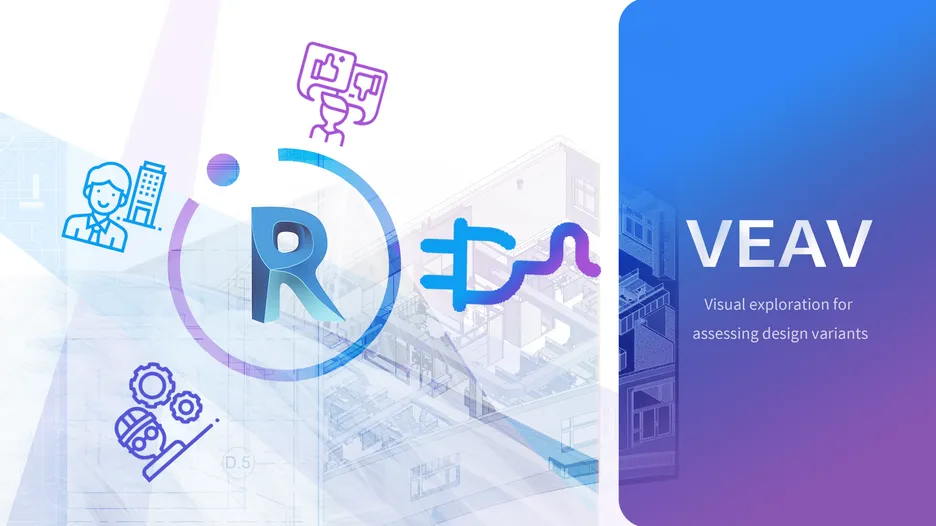
EarlyBIM: VEAV | Visual exploration for assessing design variants
Motivation
Decisions taken in the early phases of building design have major consequences regarding the performance of the resulting building. These early conceptual architectural design phases are characterized by a constant interplay for the creation of variants, their assessment and consistent detailing. The dilemma during these early phases is that while little information and details exist nearly all the important decisions are to be taken at this point. Nevertheless, the architect is not an expert in all the domains affecting the building design task. Therefore, proper evaluation of different design choices and decisions becomes assessable to him by means of successful communication and collaboration with multiple actors and domain-experts. BIM (Building Information Modelling) is an important trend in the construction industry and will result in a significant modernization of the working procedures. BIM in its essence pursues the goal to integrate and manage the semantical and geometrical information related to a construction project. This feature in BIM enables new possibilities for exchange of information in digital format between different actors, such as clients, architects and consultants.
The DFG-FOR2363 Research Unit is devoted to the development of methods that allow the assessment of alternative building designs which are partly incomplete and vague. As part of the above-mentioned research group, the Chair of Architectural Informatics (TUM) is responsible for visual exploration and supporting and documenting the design process and the decisions taken.
Goal
Communication and workflow management play a major role in the effort to improve building design activities. Our solution is based on the use of a Common Data Environment (CDE) while focusing on keeping the communication protocol as minimized as possible, avoiding the sending back and forth any actual digital BIM files.
The goal is to develop a useful communication tool to close the gap between the creative design process of the architect and the consultant’s high-performance simulation tools in the early design stages. Furthermore, Visualization and Communication go hand in hand in order to ensure a good collaboration between different actors. Visualization is an essential part of communication and exploration.
This tool supports the architects in decision-making during the early design stages by visual exploration and comparison of variants. The strongly differing education and, therefore, differences in thinking processes and specialist language seem to cause misunderstandings and ambiguities. Therefore, easy to understand visualizations and interactive exploration of design models and simulation results are among the aimed features of this tool.
Possible topics and tasks could be:
- Implementing a ticketing system to manage requests for Analysis
- Extracting and storing the history of communications plus the modifications and changes in design variants in an already developed relational server
- customizable and easy to understand dashboard to assess and evaluate different design variants.
Exemplary structure of a thesis
- Gain an overview of existing and potential applications/approaches in the context of your chosen topic/task. (Literature Research and Case Studies)
- Resulting from the study, you analyse the state of the art and compare the advantages and disadvantages of different approaches and highlight current shortfalls. On this basis, you develop a concept and a suitable experimental setup/study.
- You develop a functional prototype in the architectural context tailored to your experimental setup.
- You conduct the study (e.g., user tests) and evaluate your results.
- The last step is the evaluation of the prototype, as well as identifying the advantages and disadvantages of your approach. You discuss your results critically and highlight your findings.
Requirements
- Interest in communication and workflow management and the challenges associated with it
- Experience with user interaction concepts and evaluation methods
- Basics in the implementation of RESTfull APIs and :NET core can be advantageous.
Interested?
Ata Zahedi M.Sc. (TUM)
E-Mail: ata.zahedi(at)tum.de
Link: EarlyBIM: Visual exploration for assessing design variants